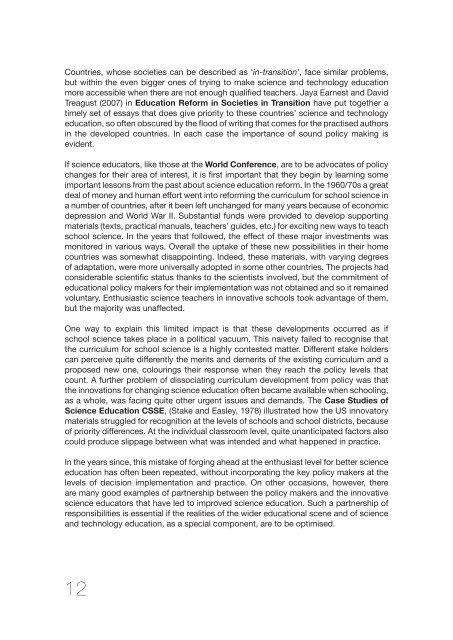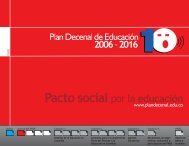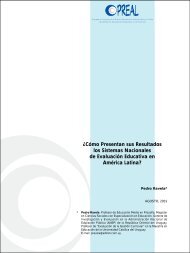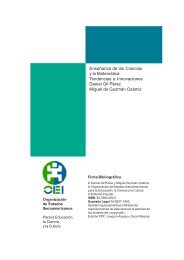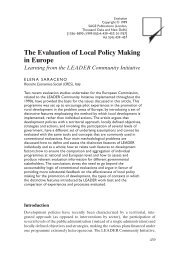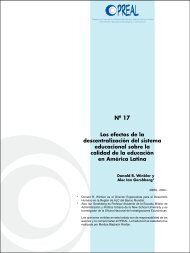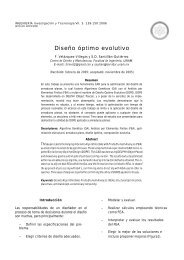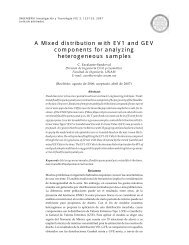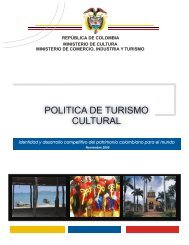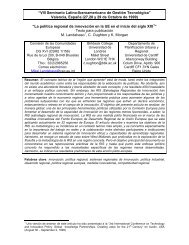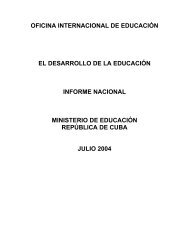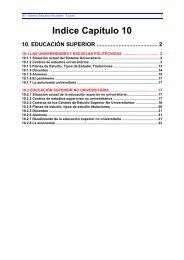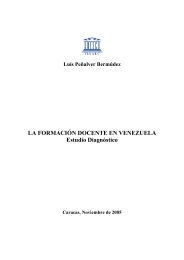Science education policy-making: eleven emerging issues; 2008 - OEI
Science education policy-making: eleven emerging issues; 2008 - OEI
Science education policy-making: eleven emerging issues; 2008 - OEI
You also want an ePaper? Increase the reach of your titles
YUMPU automatically turns print PDFs into web optimized ePapers that Google loves.
Countries, whose societies can be described as ‘in-transition’, face similar problems,<br />
but within the even bigger ones of trying to make science and technology <strong>education</strong><br />
more accessible when there are not enough qualified teachers. Jaya Earnest and David<br />
Treagust (2007) in Education Reform in Societies in Transition have put together a<br />
timely set of essays that does give priority to these countries’ science and technology<br />
<strong>education</strong>, so often obscured by the flood of writing that comes for the practised authors<br />
in the developed countries. In each case the importance of sound <strong>policy</strong> <strong>making</strong> is<br />
evident.<br />
If science educators, like those at the World Conference, are to be advocates of <strong>policy</strong><br />
changes for their area of interest, it is first important that they begin by learning some<br />
important lessons from the past about science <strong>education</strong> reform. In the 1960/70s a great<br />
deal of money and human effort went into reforming the curriculum for school science in<br />
a number of countries, after it been left unchanged for many years because of economic<br />
depression and World War II. Substantial funds were provided to develop supporting<br />
materials (texts, practical manuals, teachers’ guides, etc.) for exciting new ways to teach<br />
school science. In the years that followed, the effect of these major investments was<br />
monitored in various ways. Overall the uptake of these new possibilities in their home<br />
countries was somewhat disappointing. Indeed, these materials, with varying degrees<br />
of adaptation, were more universally adopted in some other countries. The projects had<br />
considerable scientific status thanks to the scientists involved, but the commitment of<br />
<strong>education</strong>al <strong>policy</strong> makers for their implementation was not obtained and so it remained<br />
voluntary. Enthusiastic science teachers in innovative schools took advantage of them,<br />
but the majority was unaffected.<br />
One way to explain this limited impact is that these developments occurred as if<br />
school science takes place in a political vacuum. This naivety failed to recognise that<br />
the curriculum for school science is a highly contested matter. Different stake holders<br />
can perceive quite differently the merits and demerits of the existing curriculum and a<br />
proposed new one, colourings their response when they reach the <strong>policy</strong> levels that<br />
count. A further problem of dissociating curriculum development from <strong>policy</strong> was that<br />
the innovations for changing science <strong>education</strong> often became available when schooling,<br />
as a whole, was facing quite other urgent <strong>issues</strong> and demands. The Case Studies of<br />
<strong>Science</strong> Education CSSE, (Stake and Easley, 1978) illustrated how the US innovatory<br />
materials struggled for recognition at the levels of schools and school districts, because<br />
of priority differences. At the individual classroom level, quite unanticipated factors also<br />
could produce slippage between what was intended and what happened in practice.<br />
In the years since, this mistake of forging ahead at the enthusiast level for better science<br />
<strong>education</strong> has often been repeated, without incorporating the key <strong>policy</strong> makers at the<br />
levels of decision implementation and practice. On other occasions, however, there<br />
are many good examples of partnership between the <strong>policy</strong> makers and the innovative<br />
science educators that have led to improved science <strong>education</strong>. Such a partnership of<br />
responsibilities is essential if the realities of the wider <strong>education</strong>al scene and of science<br />
and technology <strong>education</strong>, as a special component, are to be optimised.<br />
12


